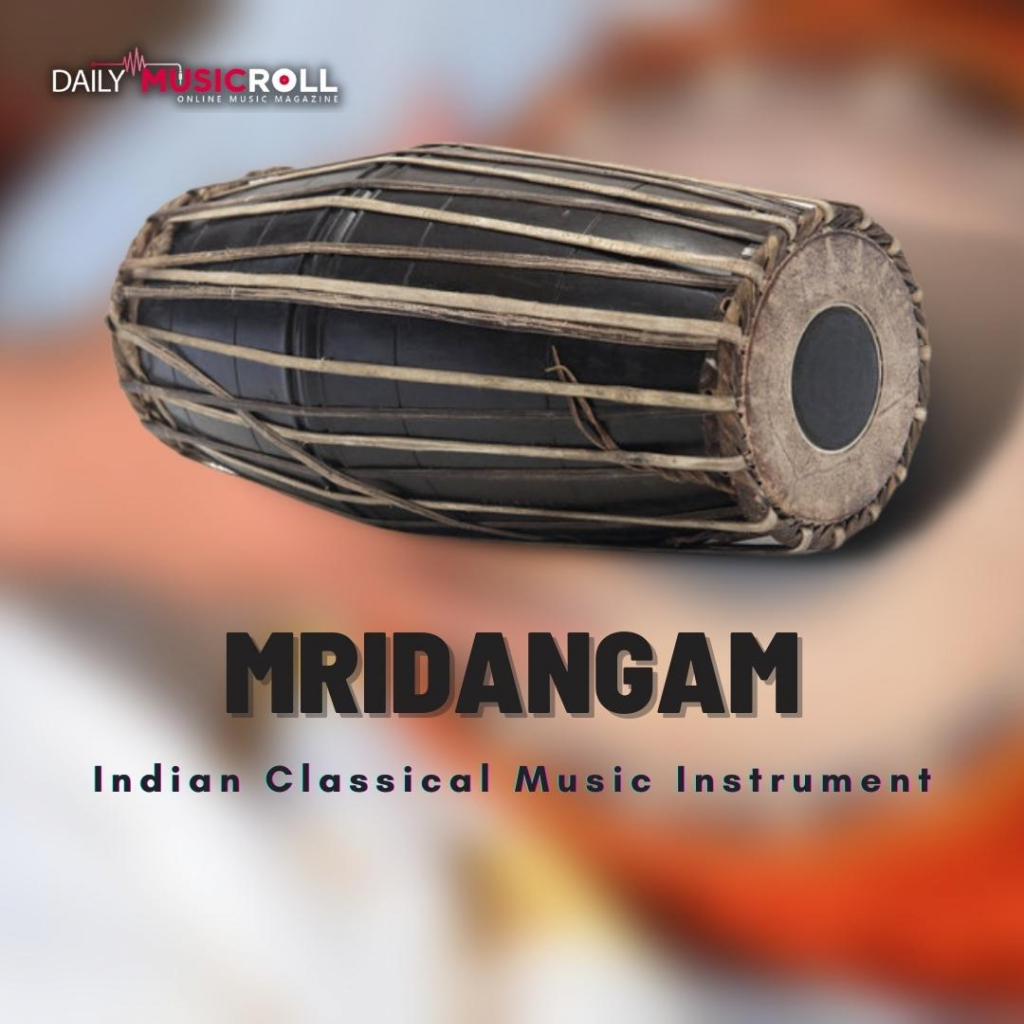India was the hub for different types of art, especially music in ancient times. One of the oldest and most significant musical instruments is Mridangam

Mridangam is a classical musical instrument that is used mostly in South Indian music. It is a popular percussion instrument, which is a double-headed drum and made of different types of wood. It is widely used in both vocal and instrumental music presentations in South India. The instrument is also known as maddal or maddalam in some places.
Etymology
The name of the instrument is formed from the union of two Sanskrit words ‘Mrit’ and ‘Anga’. In Sanskrit ‘Mrit’ means clay or earth and ‘Anga’ means limb. In the earlier days when the instrument came into being, the instrument was made of hardened clay. Over the years people started using different kinds of woods to increase their durability.
History
Mridangam is known as Tannumai in Tamil culture. In ancient Tamil literature, Sangam literature there is the earliest mention of the Mridangam. There is a detailed reference of the instrument in the Natyasastra. It was the most used and primary percussion instrument in the Sangam period. It was also used at the beginning of a war as people believed that its sound was holy and powerful enough to ward off the arrows of the enemies and protect the king. After the Sangam period, it is mentioned in the epic ‘Silappatikaram’. In the epic, Mridangam formed a part of the Antarakottu, which is a musical collection performed at the beginning of any dramatic performance. This was later developed into the iconic Bharatnatyam. The player of the Miridangam holds the title Tannumai aruntozhil mutalvan.
The instruments have been mentioned in Hindu religious scriptures as well. It is said that it was one of the favorite instruments of Lord Ganesha and Lord Shiva’s bahana, Nandi. According to the mythology, Nandi played Mridangam during Lord Shiva’s Taandav dance. Hence, the instrument is known as Deva Vaadyam, the instrument of Gods. Another story depicts that the sound of Mridangam is a recreation of the sound that was made when Lord Indra traveled through heaven on his elephant. Many believe that the instrument Tabla was created by splitting a Mridangam in half.
Construction
The body of the Mridangam is carved out of a single block of wood. The insides of the woodblock are scooped out to make it hollow. Most Mridangam makers prefer Jackwood or Redwood to make it. But sometimes the core of a coconut tree and palm tree and the wood of Morogosa tree are also used to make Mridangam these days. The instrument has a barrel-like shape and its left head is a little bigger than the right head. The length of the instrument is generally one-and-a-half or two feet and it has a diameter of twenty-five to thirty centimeters. Making the preachment takes a lot of skill to reach perfection. On the right head of the drum, there are three concentric layers of the skin. The innermost layer that is complete skin is hidden from view. The concealed layer is made from cowhide and sheepskin is used for the inner ring and calfskin is used for the outer ring. Goatskin is also used in some Mridangams.
The left head has two rings: the outer ring is made of buffalo skin and the inner one is made of sheep or goatskin. The two parchments are stretched and kept in place with a plait made out of twisted leather straps. The leather braces connected to the plaits can be loosened or tightened to tune the instrument. Mridangam is very close to another classical percussion instrument Pakhavaj that is mostly used in the Hindustani traditional music in Northern India.
Mridangam schools
The first school to teach Mridangam playing was established during the 20th century. The most famous and prominent Mridangam schools then and now are the Thanjavur School and the Puddukottai School. Both schools have their distinct playing styles. Mridangam playing has become quite popular over the years and there are Mridangam players all over the world. It has been adopted by various music styles other than Indian classical music as well.
Notable Mridangam players
There are great Mridangam players both in the past and present. Some of the most notable Mridangam players across the world are Guruvayur Dorai, Anoor Anantha Krishna Sharma, Karaikudi Mani, Bombay C N Balaji, Kovai Venugopal, Mannargudi Easwaran, Prapancham Ravindran, Srimushnam Raja Rao, N. Lakshmi Ganesh, Rohan Krishnamurthy, Umayalpuram K. Sivaraman, Vasudevan Govindarajan, K. Murthy, Palghat R. Raghu, Tiruvarur Bhaktavatsalam, and more. Palghat Mani Iyer, Palani Subramanuam Pillai, and C. S. Murugabhupathy are known as the Midangam Trinity for their amazing contribution to the art.
In modern times, Mridangam is used in Carnatic music performances. Though they are most popular in Southern India, they are performed all over the world. It is a very popular instrument that is used in the Yakshagana orchestra as an accompanying instrument and there it is called Maddale.




